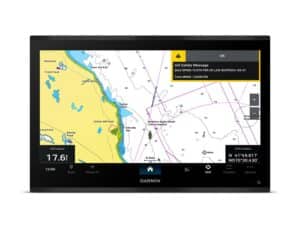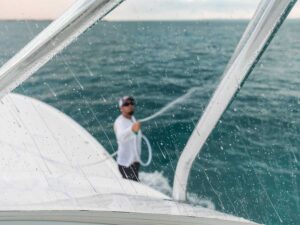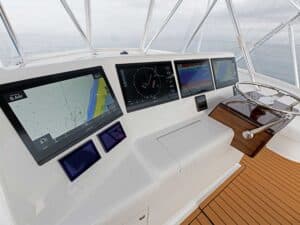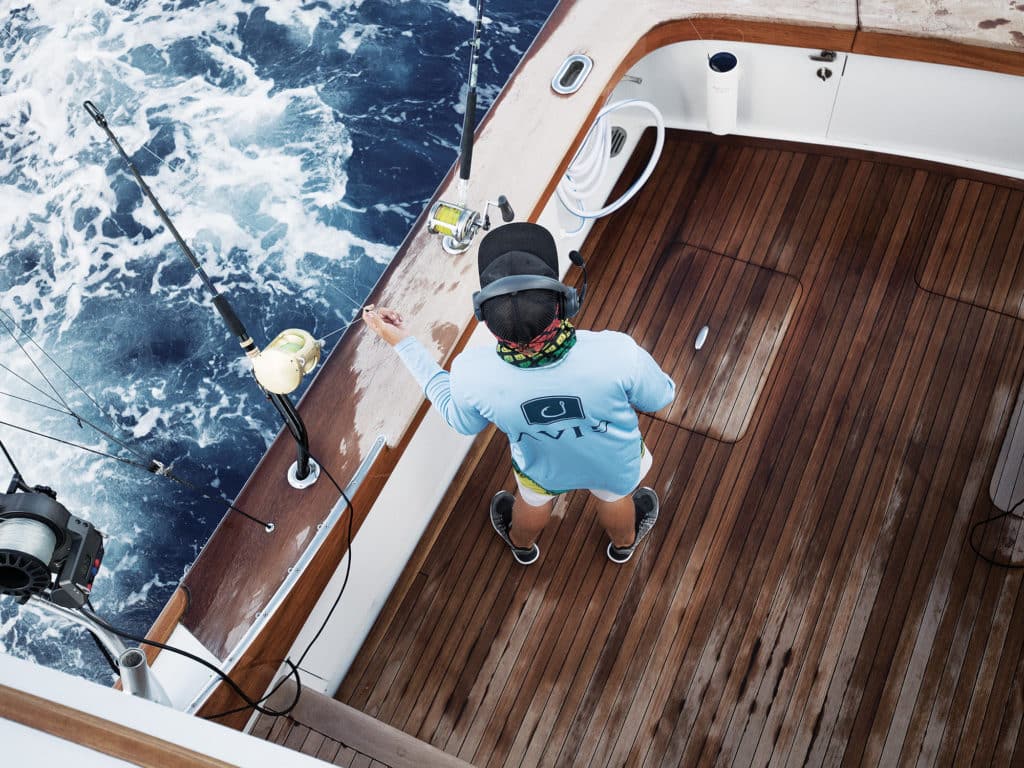
Wireless headsets are becoming standard equipment for tournament-fishing battlewagons. With them, crew members can talk in normal tones among themselves, bridge to deckhand. Even on a charter operation, skippers have the ability to maintain crew privacy for easier professional communication, but sometimes they give customers radios so they can participate in the conversation.
These radios are nearly ubiquitous now, but they were once resisted by the staunchest of current users.
Gain the Edge
Take Quinton Dieterle, captain of Cutting Edge as well as the highly competitive Get Lit on the South Florida sailfish scene.
“We hated them at first,” Dieterle says. They began with FRS (Family Radio Service) voice-activated two-way radios and headsets. The problem was, only one person could talk at a time. If the action was hot, with orders flying about, nobody could get through because of the one-at-a-time talk capability. “Then we got radios that let everyone talk at once, and the entire crew could hear everyone else. Soon we realized that in a tournament, they were worth a fish or two. Now we use them even when we are fishing just for fun.”
Dieterle’s crew uses Eartec Simultalk radios, which offer this duplex system and were the first to gain a foothold in the circuit. “Sandman, Get Lit and Qualifier are all competitors that use them,” he says.
Open Conversation
The duplex system means both the receiver and transmitter are open at the same time. On the Interface model, there’s no need to key the microphone or wait for someone to finish speaking before a possibly more urgent command can be relayed — and that makes duplex systems essential in a busy cockpit.
Eartec radios can be bought in pairs or a set of four, and all can be tuned to any one of more than 40 channels. A four‑person Cyber Setup includes a master radio and three Simultalk remote radios. It sells for $600, with additional radios about $125. All have a range of 150 yards and about five hours of talk time. The recharge time is 12 hours.
Dieterle says a key benefit of the duplex system is that “we can speak in a normal tone, or even a low tone. That’s great when you have customers on board because you can quietly guide another crewman to a struggling angler without calling him or her out and embarrassing them.”
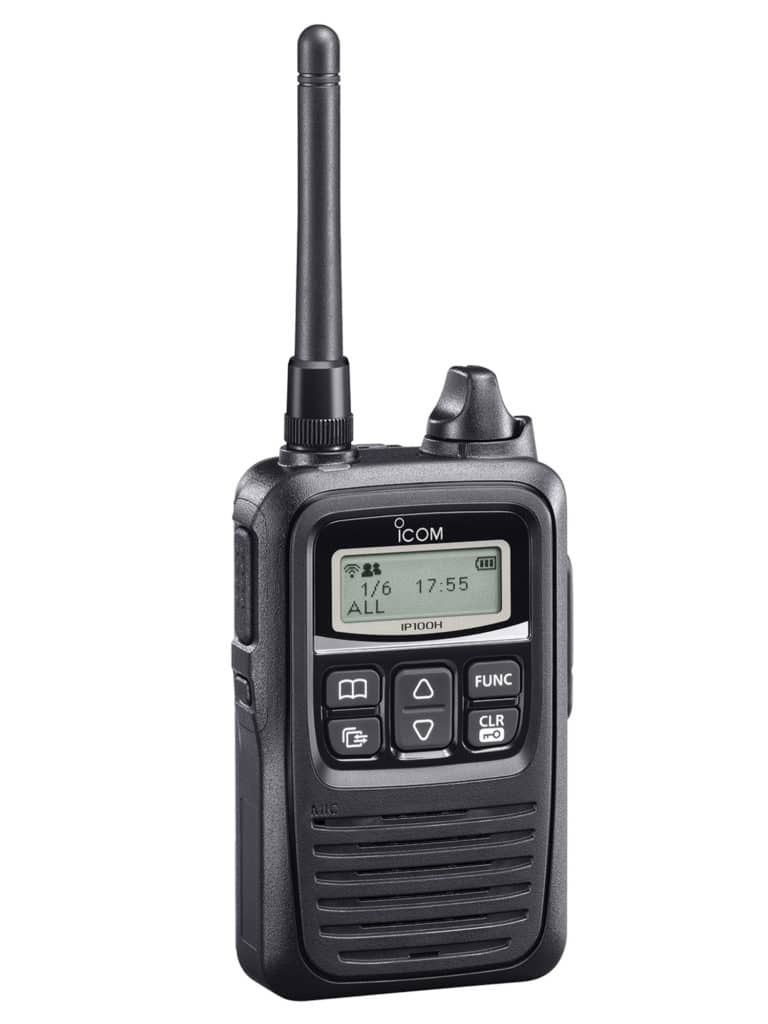
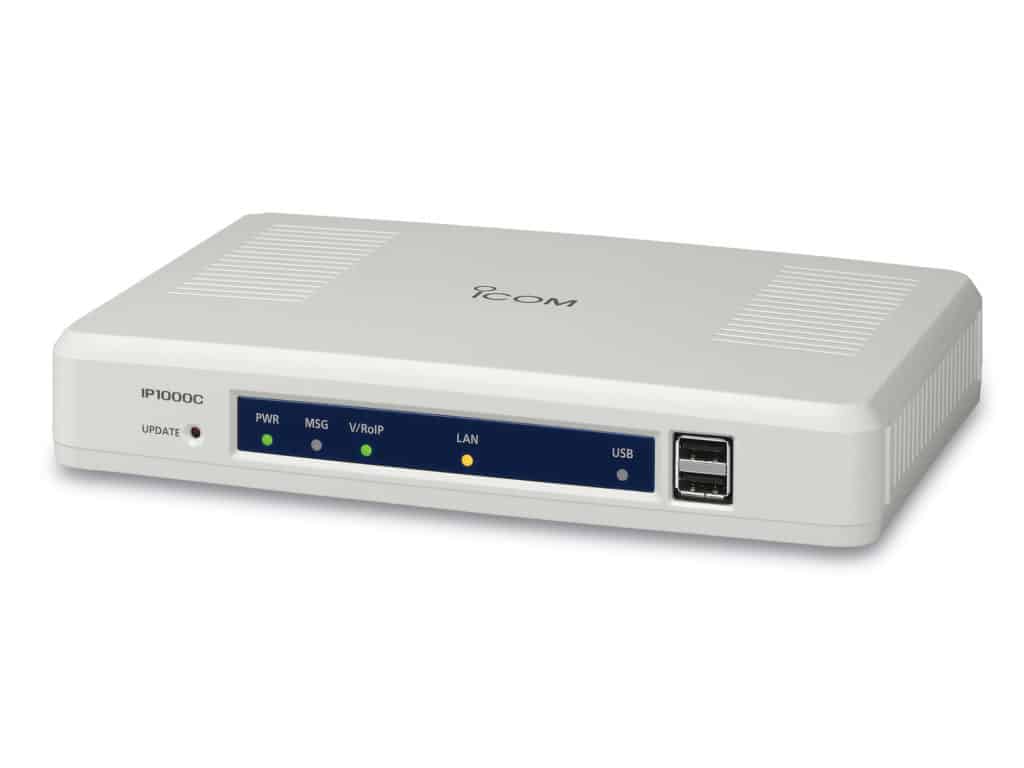
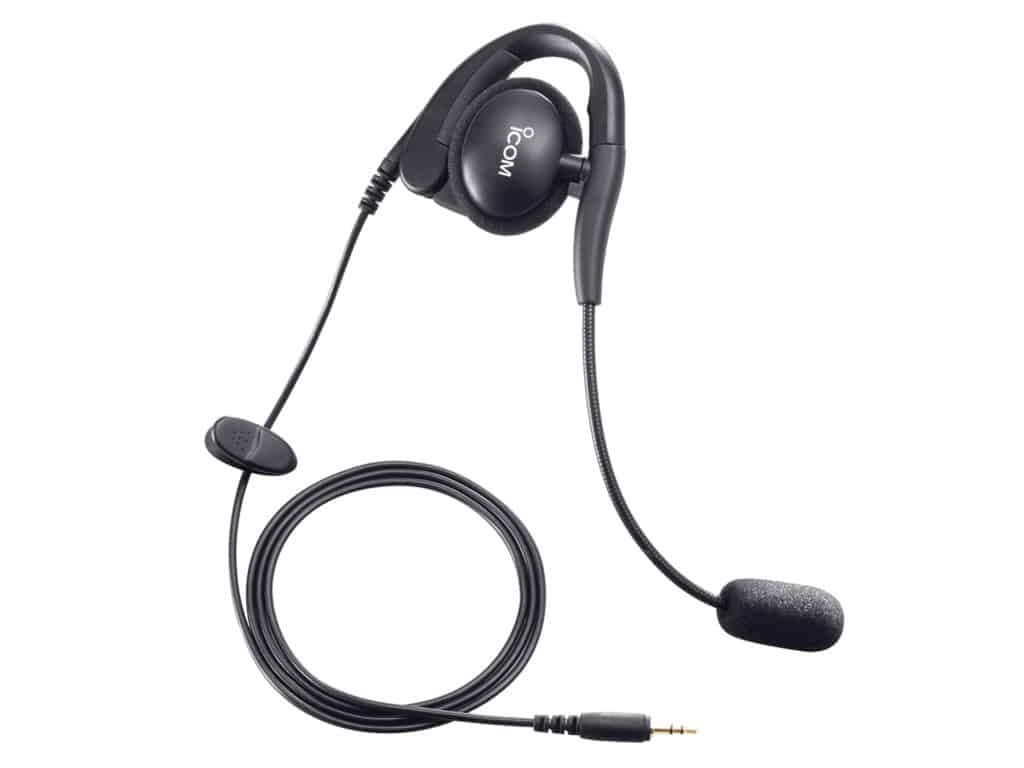
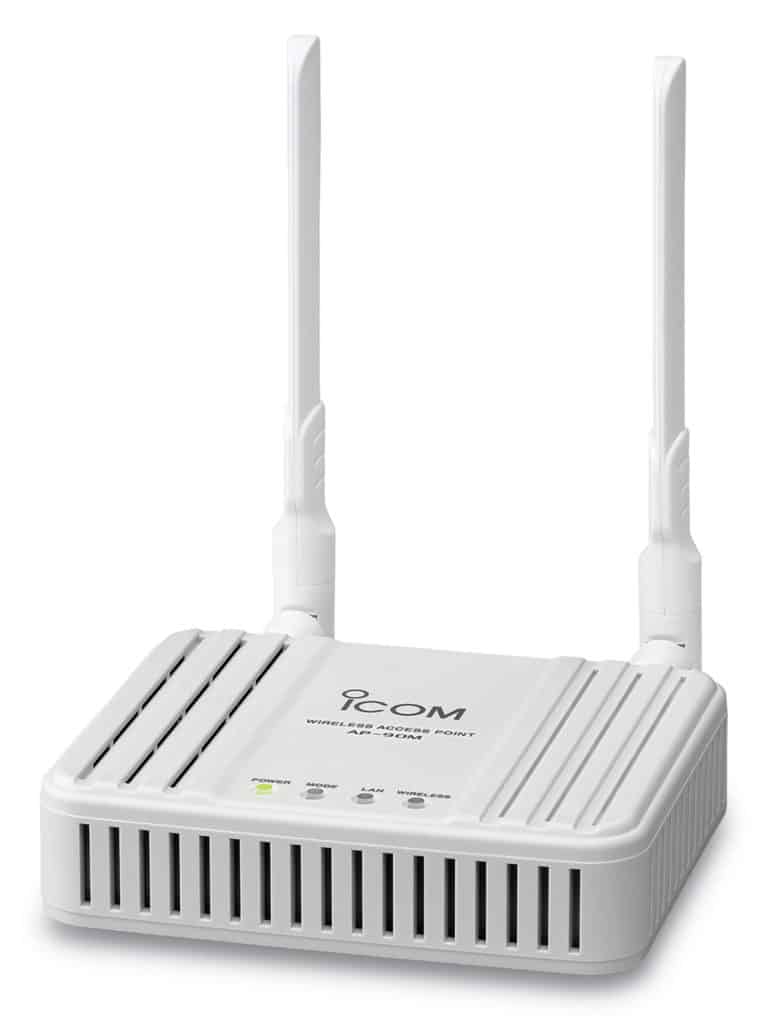
Lack of Security
But there is a drawback. “We were in a tournament fishing near Sandman,” says Dieterle. “We heard their radio talk on our radios. We learned later that they never heard us, though.”
Secrecy among anglers is never more important than when tens, if not hundreds, of thousands of dollars in prize money is at stake. That’s where the duplex radio system by marine-industry veteran Icom comes in. Icom’s IP100H duplex radios use any Wi-Fi router to connect a base station to up to 20 radios. The system is expandable, but skippers chasing billfish will never exceed more than a handful or so radios. Also key, the radios are encrypted, so only properly coded radios can receive or transmit on that system. Should a radio come up missing or communications security is breached in any way, all the radios can easily be re-encrypted to a secure code via a Web browser and Wi-Fi router.
Icom’s IP100H radio system is currently in use by many municipalities and law enforcement groups to keep in constant touch via a network of cellular/Wi-Fi stations throughout their territory. Icom’s technical representative says, “Professional sports leagues are looking at these radios for coach-to-player communication and for security purposes around stadiums.” They are ideal for it due to their encrypted communications and compact design that could easily fit within a helmet.
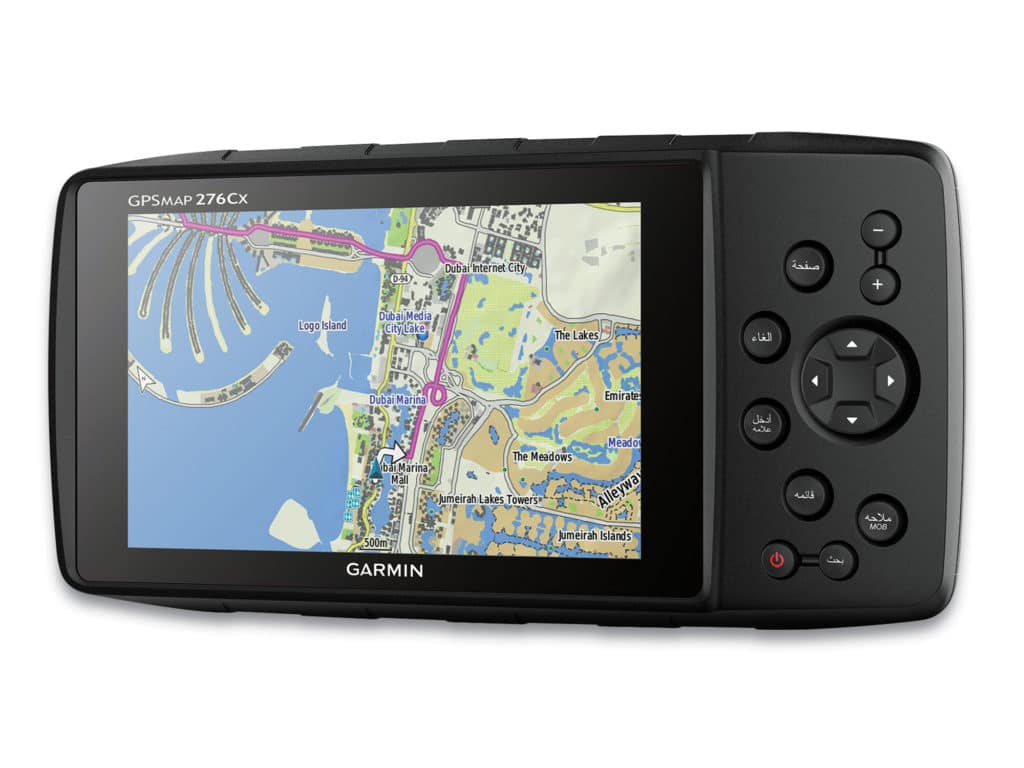
For marlin skippers, range is limited to the range of their Wi-Fi router, but a router in the salon will cover the largest battlewagon from stem to stern. And if it doesn’t, Wi-Fi repeaters are easily positioned to extend the range. The radios operate on either a 2 GHz or 5 GHz router.
A further benefit to the Icom system is the ability to address just one radio by tapping a “phone book” entry. That way, a skipper and mate can have a private conversation and nobody is the wiser.
The pricier system (about $500 per radio, plus headset and a $1,300 base station) is IPX7 waterproof-rated, avoiding the radio-in-a-baggie approach with some brands, and it’s ready for a full day offshore. The Li-ion battery gives a full 20 hours duplex talk time — not six or fewer.
Airborne Option
The David Clark Company has been making wireless duplex headsets for decades. While the headsets are bulkier, with boom microphones rather than earpieces, the technology is proven and the larger ear cups keep ambient noise down, allowing easier communication even when the diesels are revving while backing down on a fish. The systems need two hard-wired “black boxes” — a gateway and a multi-radio interface module. With them, four headsets can be connected and operated at comparable costs to Icom.
Testing the Waters
While Dieterle’s crew rejected FRS radios and their voice-activated capacity, we think there is ample reason to keep them in mind — especially if your team is just exploring the waters for wireless communications. We tested Midland’s X-Talker Two Way Radios Model (T77a; $99.99 per pair) with voice-activated capacity and earpieces with boom mics. These inexpensive radios have a long line-of-sight range that can exceed 30 miles. Should you actually want to talk privately boat to boat, they offer 36 channels; each of the first 22 can be encrypted with one of 121 different privacy codes, making 2,662 coded combinations. If privacy is your thing, changing codes after leaving port makes eavesdropping unlikely. They come with Li-ion battery packs, but each can use three AAA batteries instead.
We expect to see an even greater number of crews using headsets, keeping in touch and catching more fish.

